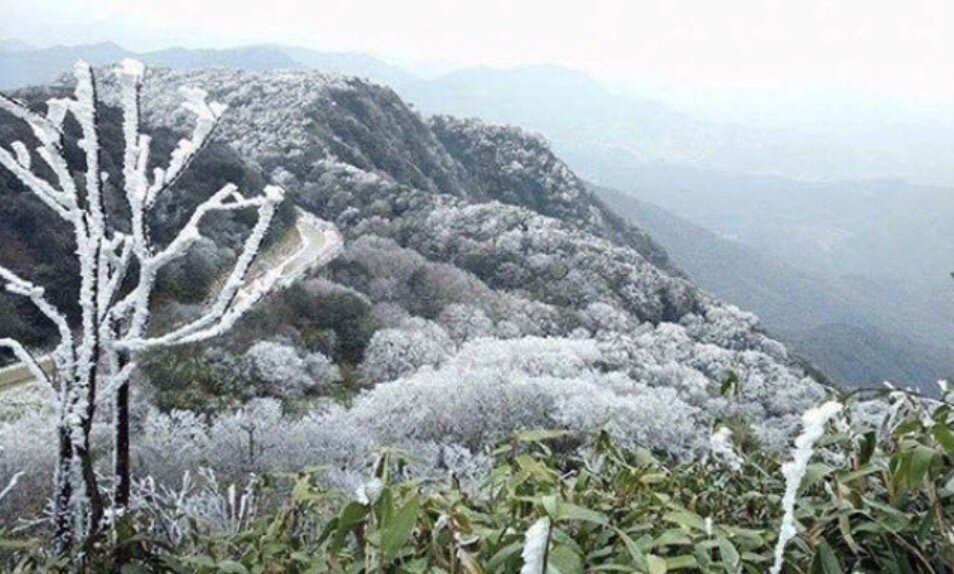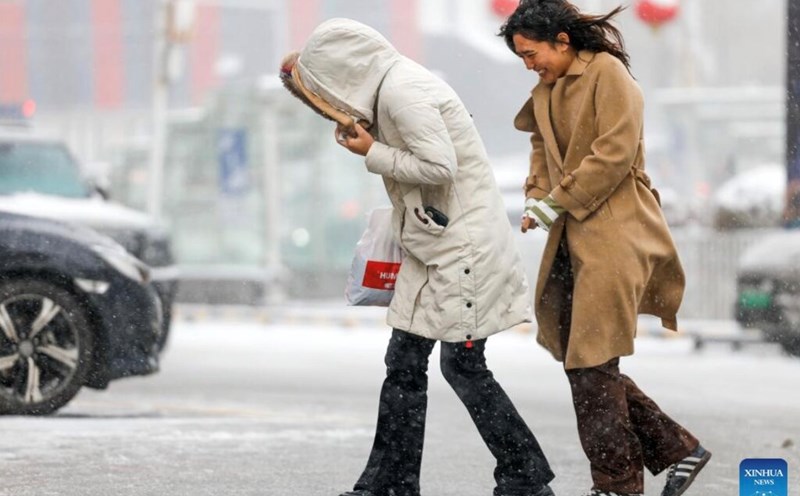The latest weather forecast from Xinhua News Agency said that the National Meteorological Administration (NMC) has issued a blue alert for the latest cold front. Temperatures are expected to drop sharply in most parts of China in the next few days.
The cold front is expected to sweep across China, causing temperatures to drop by 6 to 8 degrees Celsius in the Huanghuai region - an area that includes several provinces including Henan, Anhui, Jiangsu and Shandong - and most areas north of Huanghuai.
Temperatures will drop by 4 to 6 degrees Celsius in most southern parts of the country, with some areas seeing a drop of more than 10 degrees Celsius, the National Meteorological Administration said.
South Korea is also being hit hard by a strong cold air mass from the Arctic. On February 5, morning temperatures in Seoul dropped to minus 11.8 degrees Celsius.
The Korea Meteorological Administration noted that cold air from the Arctic will continue to affect Korea in the coming time, with snowfall forecast in many places on February 6, including Seoul and some areas of Gangwon province.
In Japan, heavy snowfall in coastal areas caused traffic disruptions. According to Kyodo, the strongest cold spell this winter disrupted rail services and air traffic in central Japan.
In Shirakawa, Gifu Prefecture, snowfall reached 129 cm in the 48 hours up to 5 p.m. on February 5, a record high.
The Japan Meteorological Agency also warned of extremely unstable atmospheric conditions as a cold front of minus 39 degrees Celsius or even lower moves from 5,000 meters above sea level from the east to the north of Japan. Heavy snowfall is not only occurring along the coast of the Sea of Japan but also on the Pacific side, where snowfall is rare.

According to the latest information on cold air strengthening and coldness from the Vietnam National Center for Hydro-Meteorological Forecasting, on February 6, a strong cold air mass was reported to be moving south.
It is forecasted that around early morning and early morning of February 7, this cold air mass will affect the Northeast region, then affect the Northwest region, North Central region, Central Central region and some places in South Central region. Northeast wind inland will strengthen to level 3, coastal areas level 3-4, some places will have gusts of level 6.
In the North, from the afternoon of February 7, the weather will turn cold and very cold; from the night of February 7, the weather will turn cold in the North Central region, from Quang Binh to Hue, the weather will turn cold and very cold in some places. The lowest temperature during this cold spell in the North will generally be 9-12 degrees Celsius, in mountainous areas 5-8 degrees Celsius, in high mountainous areas below 2 degrees Celsius in some places; in the North Central region, it will be 11-14 degrees Celsius, in the area from Quang Binh to Hue, it will be 14-16 degrees Celsius.
In Hanoi, from the afternoon of February 7, the weather will turn cold, with some places experiencing severe cold. The lowest temperature in this cold air mass will generally be 10-12 degrees Celsius. The widespread cold spell in the North and North Central provinces is likely to last until around February 10.











